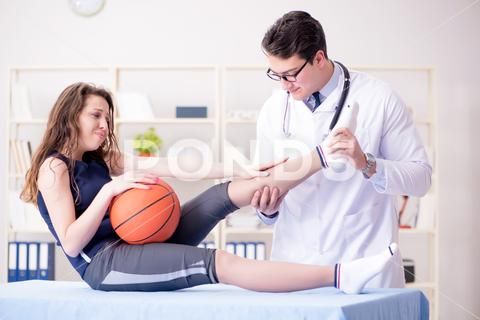
The Role of Orthopedic Doctors in Sports Medicine
Helping Athletes Take the Field, Stay in the Game, and Recover Stronger
In the fast-moving world of sports and physical activity, injuries are an unfortunate but common companion. From weekend warriors to professional athletes, the demands placed on our muscles, joints and ligaments are great. That’s where the role of the orthopedic doctor becomes crucial—especially in the field of sports medicine. At the clinic of Dr Vivek Bansal in Chandigarh-Mohali, we specialise in bridging the gap between injury and peak performance.
What is sports medicine and why orthopedics matter
Sports medicine is not just about treating injuries after they happen. It’s about a comprehensive approach: prevention, diagnosis, treatment and rehabilitation of musculoskeletal conditions related to sports, exercise and active living. An orthopedic sports physician brings in specialised knowledge of bones, joints, ligaments, tendons, muscles and nerves — enabling precise diagnosis and targeted treatment.
At Dr Bansal’s practice, a deep focus is given to shoulder and knee injuries, joint replacements, ligament reconstructions and arthroscopy.
Why is this important?
-
Every athlete’s body is unique. An injury that might be minor in one person can become career-ending in another if not managed properly.
-
Orthopedic doctors trained in sports medicine can tailor the treatment to the athlete’s goals — whether it’s returning to professional competition or simply resuming an active lifestyle.
-
With advanced techniques (arthroscopy, minimally invasive surgery, ligament reconstruction, customised rehab), outcomes improve, recovery times shorten and re-injury risk decreases.
Key roles and responsibilities of an orthopedic doctor in sports medicine
Here are some of the most important areas where an orthopedic doctor adds value in sports medicine:
1. Injury diagnosis & assessment
When a sprain, tear or fracture occurs, the first step is an accurate diagnosis:
-
Evaluating the mechanism of injury: what movement caused it, what you felt, how your body responded.
-
Physical examination – assessing strength, stability, range of motion, pain patterns.
-
Ordering and interpreting imaging (X-ray, MRI, CT scans) to identify ligament tears, cartilage damage, fractures or joint degeneration.
Dr Bansal has international training in sports-injury orthopedics and joint replacement, enabling a global standard of care.
2. Treatment planning
Once the diagnosis is clear, the orthopedic doctor crafts a treatment plan aligned with the patient’s requirement:
-
Non-surgical options (physiotherapy, bracing, injections) when suitable.
-
Surgical options when necessary – e.g., arthroscopic repair of a torn ligament, joint replacement for advanced damage, etc.
-
Collaborative planning with physiotherapists, sports trainers and coaches to ensure the strategy fits the athlete’s timeline and functional goals.
At Dr Bansal’s clinic (Chandigarh / Mohali region) you’ll find comprehensive sports-injury care that emphasises both the technical excellence of surgery and the holistic rehab for return-to-sport.
3. Surgical intervention
When surgery is the best path forward, an orthopedic sports doctor performs procedures tailored for athletes:
-
Arthroscopic repair of joints (shoulder, knee, ankle)
-
Ligament reconstruction (for example, ACL, PCL)
-
Joint replacement (partial or full) when degeneration or trauma causes irreversible damage
-
Revision surgeries when previous treatments fail
Because the specialist knows athletes need to return to high‐level activity, these procedures often use advanced technologies and minimally invasive approaches to reduce downtime.
4. Rehabilitation and return-to-sport strategy
One of the most critical phases is what happens after treatment. The orthopedic doctor oversees or coordinates:
-
Physiotherapy to rebuild strength, balance, coordination.
-
Functional training to restore agility, movement patterns specific to the sport.
-
Gradual progression back to full performance—walking → jogging → sport-specific drills → full competition.
-
Monitoring for signs of recurrence or secondary injury, and modifying load or technique accordingly.
5. Prevention and longevity
Beyond treating injuries, a top sports orthopedic doctor helps athletes minimise future risks:
-
Assessing biomechanics and spotting weaknesses or asymmetries.
-
Advising corrective exercises, warm-up/cool-down protocols, strength & conditioning programs.
-
Providing guidance on safe progression of training load, recognising early signs of over-use injuries.
-
Educating on lifestyle factors (nutrition, sleep, body composition) that affect recovery and performance.
In Dr Bansal’s practice, the emphasis is not just on fixing the injury – but restoring full function and helping you remain active for the long term.
Why choose Dr Vivek Bansal for sports injury care in Chandigarh/Mohali
-
Dr Bansal is internationally trained and has more than a decade of experience in orthopaedic sports medicine.
-
He specializes in shoulder & knee sports injuries and joint replacement – critical areas for athletes and active individuals in the region.
-
The clinic is located in Phase 1, Mohali (near Chandigarh) and serves patients from across the region, bringing advanced care to local athletes.
-
The approach is holistic: precise diagnosis, cutting‐edge treatment, and a strong rehabilitation pathway to get you back in the game quickly, safely and confidently.